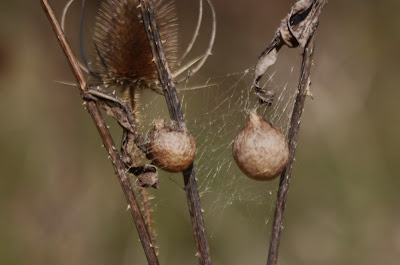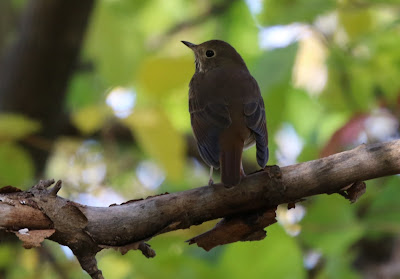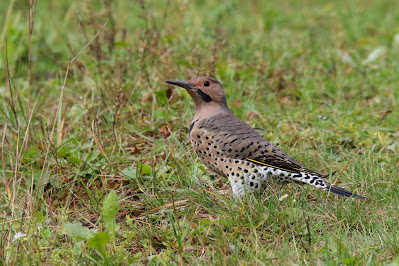A Walk at Henderson C.A.
I always enjoy hiking at Henderson Conservation Area near Petrolia. The weirs were dry and I was able to walk the trails circling the lake. I had the trails to myself on Friday morning!
I need to start carrying sunflower seeds with me. I managed to salvage 7 seeds from the depths of my pocket from last winter and it didn't take long for them to disappear. The birds were grabbing seeds as they flew by. No stopping and enjoying the meal for these Black-capped Chickadees!
A female, Red-bellied Woodpecker noisily searched for food in a dead tree.
She extracted something to eat from under the bark. The bird was too distant to confirm the food, but it could have been a nut or even a spider egg sac. (see below)
Spider egg sacs can be found in many sheltered locations. These sacs were attached to some teasel on a south facing slope, but some spiders will lay egg sacs under loose tree bark. The size and shape of the object in the woodpecker's beak (above) made me think the Woodpecker had possibly found a sac full off over 100 eggs.
Most of the maple leaves are becoming brittle and falling from the trees, but in a burst of sunshine, these American Beech leaves glowed!
Most of the maple leaves are becoming brittle and falling from the trees, but in a burst of sunshine, these American Beech leaves glowed!



















































